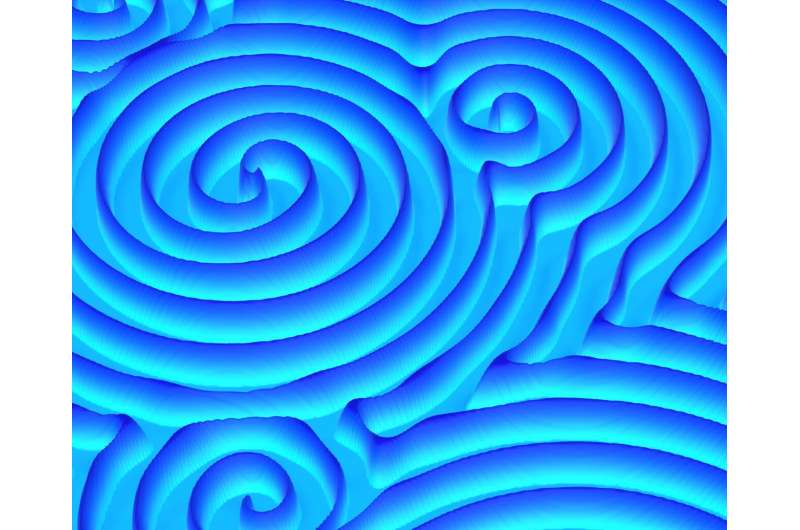
December 12, 2024 by Max Planck Society
Collected at: https://phys.org/news/2024-12-molecular-interactions-key.html
Non-reciprocal interactions can increase the order in an active system. This is the finding of a study by scientists from the department of Living Matter Physics at the Max Planck Institute for Dynamics and Self-Organization (MPI-DS).
The researchers created a model to describe the emerging patterns depending on the amount of non-reciprocity in an active system. The work is published in the journal Physical Review Letters.
Living matter often shows characteristics that are absent in simpler physical systems. A typical example is the asymmetrical interaction between different particle species: one type of molecule might be attracted by the other, which in turn is repelled—just like a predator chases its prey which in turn tries to escape.
This phenomenon is called non-reciprocal interaction and can give rise to fascinating patterns on a larger scale, as has been shown previously. The resulting macroscopic pattern often resembles structures that are essential for the overall functionality of the system, for example a living cell.
In a new study, Navdeep Rana and Ramin Golestanian investigated the interplay between non-reciprocity and the formation of defects, which influences the resulting patterns.
“Typically, stronger non-reciprocity causes higher activity and is thus associated with less order in the system,” explains Rana. “However, we found that in fact the opposite is true and well-ordered wave patterns are formed when non-reciprocity exceeds a certain level.”
Thus, the new study highlights the importance of non-reciprocity in eliminating defects in active systems to create ordered structures.
The scientists used simulations to probe the physical properties of the naturally occurring defects that disrupt order, just like the dislocations in the metal that is used to make spoons.
“While a non-equilibrium drive in the form of repeated bending of a spoon creates more entangled defects and weakens its strength until it breaks, non-reciprocal interactions drive the system towards the path of eliminating the defects and creating perfect order,” adds Golestanian.
“This remarkable property opens many avenues for applications of non-reciprocal active matter systems,” he concludes.
Overall, the study reveals fundamental physical principles underlying the organization of active matter—which are important for the formation of life.
More information: Navdeep Rana et al, Defect Solutions of the Nonreciprocal Cahn-Hilliard Model: Spirals and Targets, Physical Review Letters (2024). DOI: 10.1103/PhysRevLett.133.078301
Journal information: Physical Review Letters

Leave a Reply